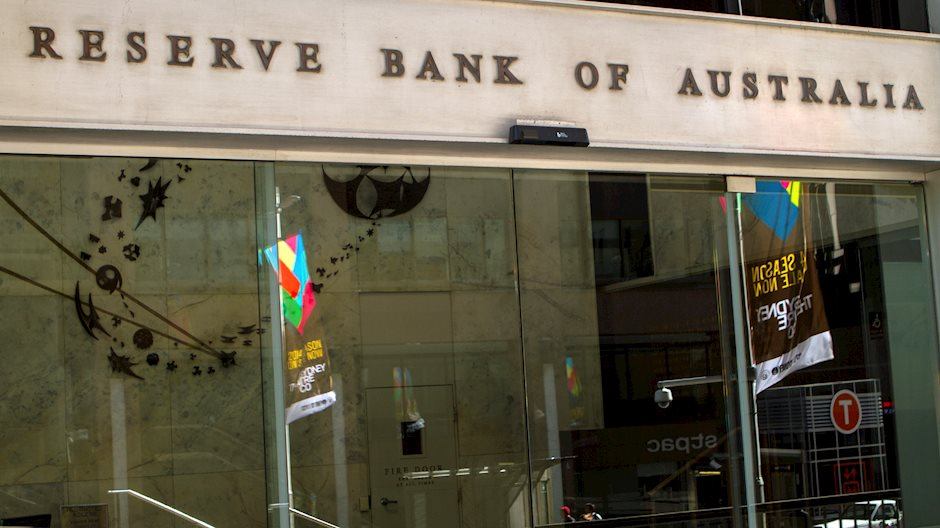Created
: 2024.11.19














![]() 2024.11.19 10:31
2024.11.19 10:31
The Reserve Bank of Australia (RBA) published the Minutes of its November monetary policy meeting on Tuesday, highlighting that the board remains vigilant to upside inflation risks and believes policy needs to remain restrictive.
The board saw no "immediate need" to change the cash rate.
It is not possible to rule anything in or out regarding future changes in the cash rate.
Forecasts are based on the technical assumption that the cash rate will stay steady until mid-2025.
The board considered what might warrant a future change in the cash rate or a prolonged steady period.
The board discussed scenarios where policy would need to stay restrictive for longer or tighten further.
The supply gap might be wider than assumed, necessitating tighter policy.
Rates might need to rise if the board judged that policy was not as restrictive as assumed.
The board has "minimal tolerance" for inflation above forecasts.
The board would need more than one good quarterly inflation report to justify a rate cut.
The board considered scenarios where a rate cut would be justified, including weak consumption.
A sharp deterioration in the labor market or forward-looking data could require an easing of policy.
The board discussed risks from abroad, including U.S. economic policy and China's stimulus measures.
The outlook for U.S. policy is uncertain, with some scenarios indicating significantly lower global growth and higher inflation.
The outlook for China has been upgraded thanks to stimulus, though the impact on Australia could still be modest.
At the time of writing, AUD/USD is trading 0.10% lower on the day to trade at 0.6500.
The Reserve Bank of Australia (RBA) sets interest rates and manages monetary policy for Australia. Decisions are made by a board of governors at 11 meetings a year and ad hoc emergency meetings as required. The RBA's primary mandate is to maintain price stability, which means an inflation rate of 2-3%, but also "..to contribute to the stability of the currency, full employment, and the economic prosperity and welfare of the Australian people." Its main tool for achieving this is by raising or lowering interest rates. Relatively high interest rates will strengthen the Australian Dollar (AUD) and vice versa. Other RBA tools include quantitative easing and tightening.
While inflation had always traditionally been thought of as a negative factor for currencies since it lowers the value of money in general, the opposite has actually been the case in modern times with the relaxation of cross-border capital controls. Moderately higher inflation now tends to lead central banks to put up their interest rates, which in turn has the effect of attracting more capital inflows from global investors seeking a lucrative place to keep their money. This increases demand for the local currency, which in the case of Australia is the Aussie Dollar.
Macroeconomic data gauges the health of an economy and can have an impact on the value of its currency. Investors prefer to invest their capital in economies that are safe and growing rather than precarious and shrinking. Greater capital inflows increase the aggregate demand and value of the domestic currency. Classic indicators, such as GDP, Manufacturing and Services PMIs, employment, and consumer sentiment surveys can influence AUD. A strong economy may encourage the Reserve Bank of Australia to put up interest rates, also supporting AUD.
Quantitative Easing (QE) is a tool used in extreme situations when lowering interest rates is not enough to restore the flow of credit in the economy. QE is the process by which the Reserve Bank of Australia (RBA) prints Australian Dollars (AUD) for the purpose of buying assets - usually government or corporate bonds - from financial institutions, thereby providing them with much-needed liquidity. QE usually results in a weaker AUD.
Quantitative tightening (QT) is the reverse of QE. It is undertaken after QE when an economic recovery is underway and inflation starts rising. Whilst in QE the Reserve Bank of Australia (RBA) purchases government and corporate bonds from financial institutions to provide them with liquidity, in QT the RBA stops buying more assets, and stops reinvesting the principal maturing on the bonds it already holds. It would be positive (or bullish) for the Australian Dollar.
![]()
Created
: 2024.11.19
![]()
Last updated
: 2024.11.19

FXStreet is a forex information website, delivering market analysis and news articles 24/7.
It features a number of articles contributed by well-known analysts, in addition to the ones by its editorial team.
Founded in 2000 by Francesc Riverola, a Spanish economist, it has grown to become a world-renowned information website.
We hope you find this article useful. Any comments or suggestions will be greatly appreciated.
We are also looking for writers with extensive experience in forex and crypto to join us.
please contact us at [email protected].
Disclaimer:
All information and content provided on this website is provided for informational purposes only and is not intended to solicit any investment. Although all efforts are made in order to ensure that the information is correct, no guarantee is provided for the accuracy of any content on this website. Any decision made shall be the responsibility of the investor and Myforex does not take any responsibility whatsoever regarding the use of any information provided herein.
The content provided on this website belongs to Myforex and, where stated, the relevant licensors. All rights are reserved by Myforex and the relevant licensors, and no content of this website, whether in full or in part, shall be copied or displayed elsewhere without the explicit written permission of the relevant copyright holder. If you wish to use any part of the content provided on this website, please ensure that you contact Myforex.
Myforex uses cookies to improve the convenience and functionality of this website. This website may include cookies not only by us but also by third parties (advertisers, log analysts, etc.) for the purpose of tracking the activities of users. Cookie policy